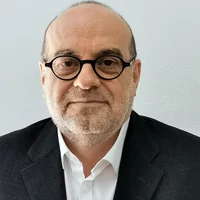The search for sustainable energy solutions is of utmost priority in modern society. Overcoming the challenges of energy conversion and storage is critical to reducing dependence on fossil fuels and harnessing renewable sources. Dielectric materials hold great promise for meeting these challenges, but current limitations prevent their widespread use.
Project Overview
Nikita's Ambizione journey began on January 1st, with a clear vision: to engineer materials at the nanoscale to harness mechanical sources of energy like vibration and bending. Picture walking in shoes embedded with capacitors that can capture and store the energy from each step, charging and discharging much faster than batteries. Nikita aims to engineer these materials in a way that maintains rapid energy transfer while increasing storage capacity. Capacitors are used to ensure a usable lifetime of over a million cycles. This innovative approach involves growing thin films of ceramic materials, each layer measuring just one hundred nanometers or thinner.
Nikita's research focuses on the flexoelectric effect, a phenomenon whereby a gradient of strain is induced within the material. Simply put, as certain materials undergo mechanical stress, they generate electric charge—an effect that can be harnessed for various applications. By leveraging this effect, Nikita aims to develop materials with enhanced energy conversion and storage capabilities, paving the way for sustainable energy solutions.
Research Motivation
Nikita's journey began during his doctoral studies, where a fascination with dielectric and piezoelectric materials laid the foundation for this groundbreaking project. Inspired by the potential of flexoelectricity to address existing energy challenges, Nikita embarked on a quest to explore its practical applications. PSI offers optimal instrumentation to investigate his project. Collaborations with leading institutions such as the ETH Zurich and access to state-of-the-art facilities further fueled Nikita's ambition to push the boundaries of scientific knowledge.
Research Impact
The potential impact of Nikita's research is profound. By developing materials that can efficiently convert mechanical energy into electrical energy and vice versa, the project offers a pathway to cleaner, more sustainable energy technologies. Beyond environmental benefits, the project holds promise for economic and societal advancements, offering cheaper and longer-lasting alternatives to traditional batteries.
The research opens doors to more efficient technologies and novel applications in personal scale energy conversion and harvesting. For instance, during his doctoral thesis working with engineered plastics, a project idea included implanting a device to use the energy of the beating heart to power a pacemaker. Another use case is the mechanical motion of typing on your keyboard, material underneath can harvest this energy and extends the single charge of a computer.
The applications of Nikita's research are vast and diverse. Beyond improving energy conversion and storage technologies, the project aims to impact industries ranging from electronics to renewable energy. By integrating flexoelectric materials into devices like photocells and capacitors, Nikita envisions advancements in areas such as portable electronics, photovoltaics, and even photoelectrochemical catalysis.
A big thanks goes out to collaborators at ETH Zürich, Institut Jozef Stefan, the European Synchrotron Research Facility (ESRF), and the University of Twente!
Congratulations Nikita!


